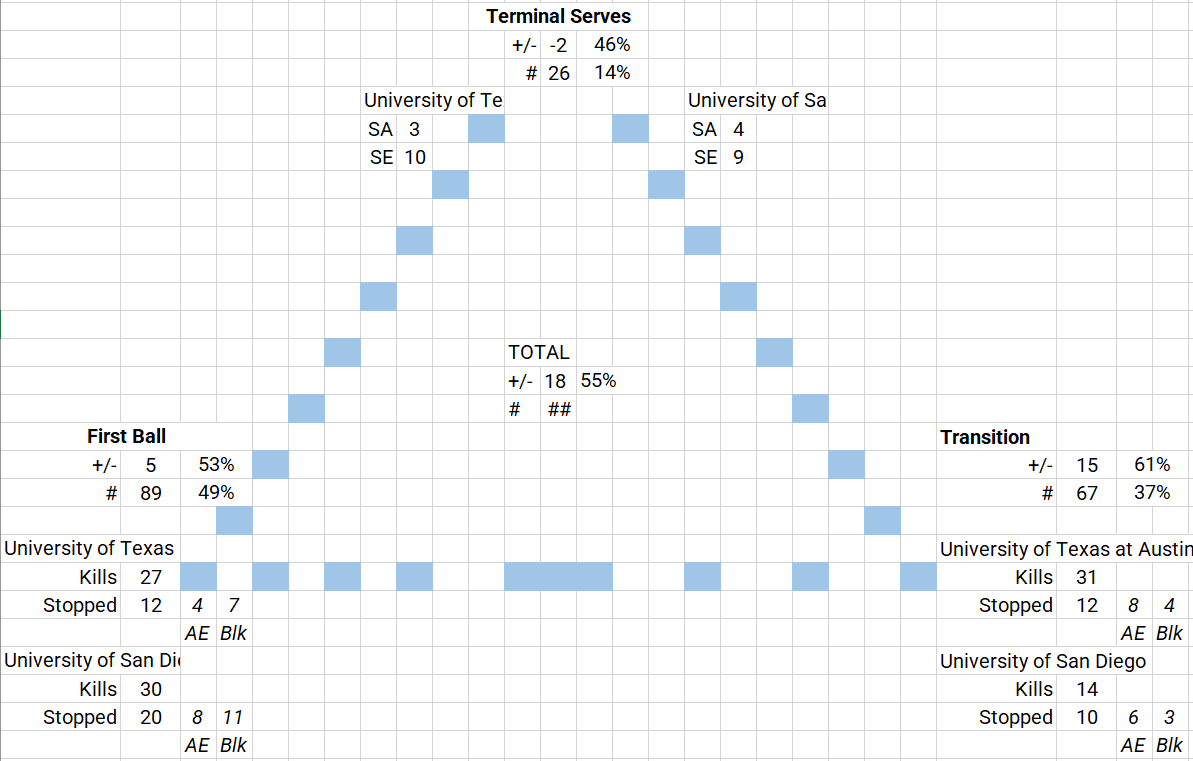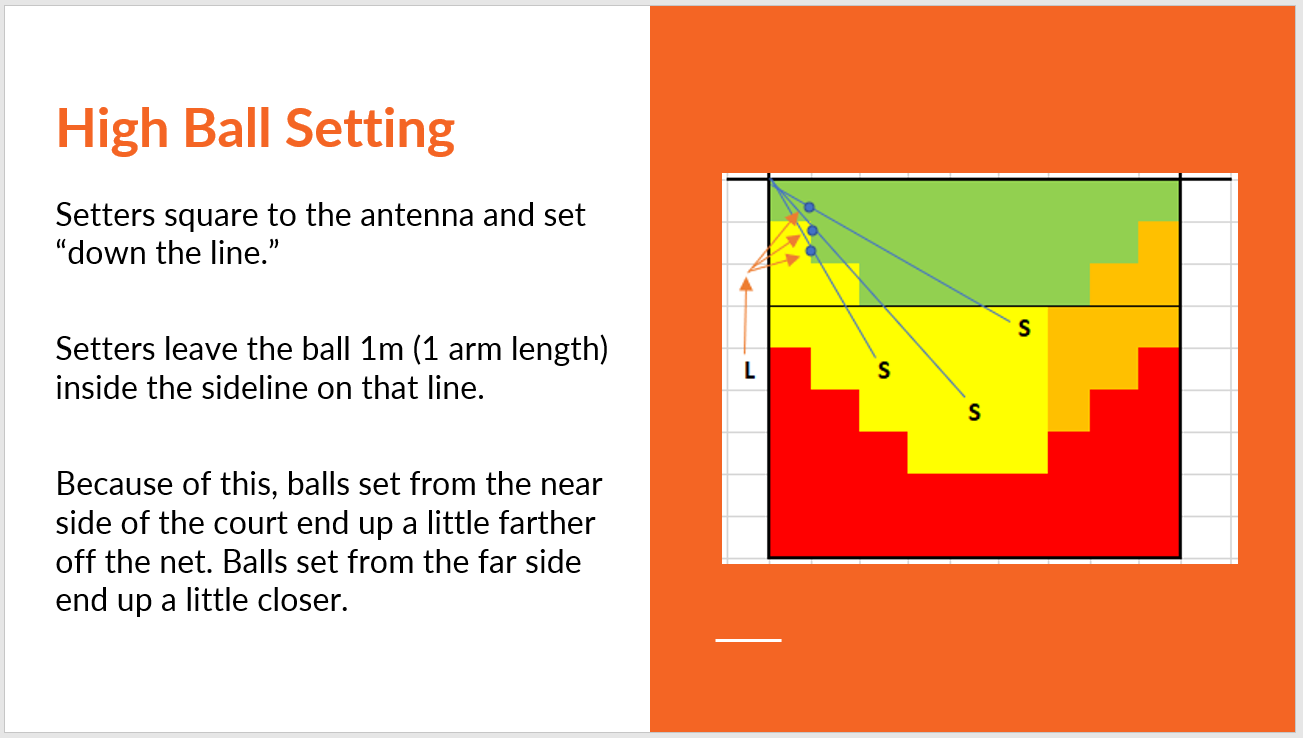After a couple of exciting matches on Thursday, the NCAA Women’s Championship field is down to just Texas and Louisville. Before we look at these matchups, let’s see how they got here.
Texas v USD
I’ve shown these Triangle format analyses in a few different ways. Here’s the Volleystation readout I like. Let’s see what it tells us.
(Note: I’m running my Offensive Concepts seminar this weekend, so I didn’t have time to go back and correct codes. This is just pulled from the Volleymetrics code and if you’ll note, the +/- is off by a point. Sometimes VM doesn’t always put “won/lost” point when the point ends on a weird play that’s not clearly an ace/kill/block/error.)
Well, this is pretty clear. San Diego won the Terminal Serve battle by a little and lost First Ball by a little, but it was a Transition shellacking. USD struggled to kill the ball in Transition and Texas outhit them in trans 0.253 to 0.098.
In How To Beat: San Diego, I highlighted the importance of handling their mix of tempos, particularly when they can accelerate in Transition.
USD really mixes tempos well. I love their ability to accelerate the tempo when that is there and slow it down when it’s not. Something I talk about at my Offensive Concepts clinic is to avoid getting stuck in this mushy middle where you’re not really going fast enough to apply pressure with speed but you’re also under-setting the hitter and not letting them get to full extension. USD can hang the ball up and bang with the best of them.
So, how did this work out?
Well, for starters, San Diego’s dig quality wasn’t quite there against Texas- at least not the way it’s been there in some other matches. It’s not easy to dig for control against the best offensive team in the country, and San Diego spent a lot of the match hitting bumpsets in Transition.
When USD was able to get in-tempo, they were fairly effective, but mostly on the slightly-higher balls to Edwards as opposed to the lightning-fast balls to Lukes. Of course, some of that was just good defense:
I also highlighted the importance of keeping your left-side sets inside against USD, especially in Transition.
Hanging the set a little inside, especially in trans, and especially if you slow it down just a touch, allows hitters to keep the ball on their right shoulder and then rotate down the line to use the edge blocker. It also eliminates the antenna as a third blocker and gives you a lot of room to open up the edge or beat her down line. When the ball is right near the antenna, the margin for error shrinks.
If the hitter is step-closing into the court, it also opens up some nice drop tips, which are a great play against a smaller blocker.
Let’s look at all 20 (20!) of Texas’s leftside kills in Transition.
This is already part of Texas’s system; this wasn’t a specific adjustment they made. It’s interesting because this is something I often get some contention over when I do my Offensive Concepts seminars.
There’s sometimes a feeling of, but my setters are good enough to push the ball all the way out. That’s not the point! Your hitters have more options when they are a little inside, and you give yourself more room for error. If you aim 1m inside, and you miss by a little, your hitter is still in an okay spot. When you aim all the way out, and you miss by a little, now your hitter is past the antenna and screwed.
Okay, good job Texas, let’s turn to the other match.
Pitt v Louisville
Instead of the Triangle, I want to really zoom in on the Serve/Pass angle here, because that was clearly the defining feature of this game, particularly the 5th set. In How To Beat: Pitt, I highlighted Pitt’s strength in this area of the game.
Keep reading with a 7-day free trial
Subscribe to Smarter Volley by Joe Trinsey to keep reading this post and get 7 days of free access to the full post archives.




